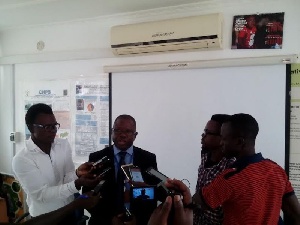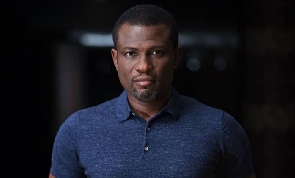A public announcement made by the Upper East Regional Director of Health, Dr. Kofi Issah, to the effect that some government vehicles had gone missing at the regional health directorate has strongly backfired with threatening fallout.
Dr. Issah, in the last week of August, this year, had told stakeholders including UNICEF and the media at a midyear health service performance review programme in Bolgatanga, the regional capital, that the region’s “transport manager” could not point at the whereabouts of “five vehicles” at the close of 2015.
“As we took stock of 2015, somewhere along the line we realised that five vehicles were on our inventory but the transport manager could not account for them physically. The vehicles were not around where we normally park them. We followed administrative procedure by writing to the Director General that this is the situation.
“We wrote to him and we’ve written to the Regional Minister to advise us. They are not bicycles; they are not motorbikes. These are vehicles- one car, one Mitsubishi Pajero, one V8 and two pickups,” he said on Wednesday August 24.
Media reports, following the announcement, drew widespread shock, disappointment and rage, with traditional authorities and civil society organisations in the region heaping pressure on government to help retrieve the “missing vehicles”.
But a two-page letter dispatched thereafter to the regional director from a disheartened Director-General of the Ghana Health Service, Dr. Ebenezer Appiah-Denkyira, copies of which are in Starr News’s possession, points out that the director knew the whereabouts of the “missing vehicles” before he went public and orders him to report at the headquarters for explanations.
Excerpts from a summons letter
The letter, copied to the Minister of Health and the Chairman of the Ghana Health Service Council, partly reads: “Media reports on your address at the region’s [just-ended] 2016 [half-year] review also harps on allegations that you made about missing vehicles in your region. This has been after you had received my [above-mentioned] letter that had indicated the whereabouts of the vehicles in response to your letter on the issue to me. The vehicles as indicated in my letter to you are not missing as you alleged and they are still in the Ghana Health Service.”
It continues: “You were also present at the signing of an agreement with KOICA Ghana at the GHS headquarters on Friday August 19, 2016, for a project initiated by your predecessor that is going to come along with additional new vehicles to enhance service delivery in the Upper East Region. It is, therefore, strange that you have resorted to applying to the Chief of Staff, Office of the President for a vehicle for your monitoring activities.”
It adds: “Indeed, it is much more surprising considering that you wrote letter to [the] Chief of Staff and made the media allegations after you had received my [above-mentioned] letter. In the light of the above, you are requested to report to my office to explain whether this behaviour of yours is in line with what is expected of a Director in the Ghana Health Service.”
A turbulent rise to the top
Dr. Issah’s rise from a deputy regional director in the Brong Ahafo Region to the status of a regional director in the Upper East Region in 2015 was accompanied by an open disquiet in the Northern Region and also what was more than just a show of public anger in the Upper East Region.
He became the preferred choice among 7 candidates who applied to replace a retired Northern Regional Director of Health, Dr. Akwasi Twumasi. But his appointment was met with stiff protests from some residents of Tamale who clamoured openly in the regional capital for one of the disappointed candidates, Dr. Jacob Mahama, a deputy regional director in the Northern Region, to head the directorate.
To quell the uprising and forestall further disturbances, the protesters were granted their wish in a swift arrangement that unexpectedly saw Dr. John Koku Awoonor-Williams, the Upper East Regional Director of Health, asked to move to the headquarters for Dr. Issah to take over his place.
The solution to that crisis turned out to be a problem in itself as public protests erupted in the Upper East Region, not against the appointment of Dr. Issah, but against what they described as an “unacceptable” manner of “withdrawing” a widely celebrated Dr. Awoonor-Williams in the middle of an uncommon wave of transformation he was leading for a deprived region he took over in April, 2008.
Was Dr. Issah targeting Dr. Awoonor-Williams?
Whilst civil society organisations and scores of residents across the region, armed with petitions to President John Dramani Mahama, were strongly pushing for Dr. Awoonor-Williams to stay, the transferred director purportedly was also being shelled with anonymous threats to choose between a sharp flight and a gross embarrassment.
On Monday, October 26, 2015- a day a pro-Issah group allegedly had planned to lock up the office of the Regional Health Director- Dr. Issah reportedly appeared before Dr. Awoonor-Williams’s arrival at the directorate to assume office but staff keeping the keys to that office did not allow him in.
Dr. Awoonor-Williams arrived when a regional health management team meeting was underway at the directorate’s conference hall. It was in that same meeting he submitted a voluminous logbook containing some handover notes he had prepared all through the previous Saturday and Sunday.
He left the hall without a word at a cold handover ceremony that lasted only about 10 minutes. He did not return to that office. From the hall, the man, who is both nationally and globally described as the “best thing to have ever happened to health service delivery” in the region in many big ways, walked into his car alone and drove away without a fanfare.
Although Dr. Issah did not publicly mention any names in connection with the “missing vehicles” in the announcement, the public, who already knew the history of the handing-over buildup, believed he was strongly hinting that his immediate predecessor had ‘stolen’ the vehicles and they deduced that he had deliberately thrown the information out to smear him.
From ‘Bring back our vehicles’ to ‘Bring back our honour’
Checks by Starr News have revealed that the “missing” automobiles are among 6 special vehicles meant for the Ghana Essential Health Intervention Project (GEHIP) in the region.
Three of the vehicles are said to be in the region for service delivery whilst the rest have been sent to the headquarters for the continuation and expansion of the same project in the Northern and the Volta regions.
“I have made my statement. If the Ghanaian public wants to know, they will know. There are processes. I have statutorily reported on my stewardship. I have left the matter for the authorities to sort out. That is just all. The vehicles are not for me. They are for the public,” Dr. Issah reacted in a telephone interview with Starr News after the Director-General’s letter had come into public sight.
The fresh revelations are flying high in the face of a 'deceived' public. The same voices that sang ‘Bring back our vehicles’ in August now are chanting ‘Bring back our honour’ in September.
“What he (Dr. Issah) did is never done in public service. Even granted that somebody stole the vehicles, you don’t have the mandate to report it to the public. There is what we call a command structure. Only the Director General can do that after he has been informed about it, and he would in turn have to inform the Minister of Health first about it. Even in this particular case, the claim is completely false. Yet, you reported it to the Regional Minister and the BNI. Then, you made it public to the press and announced it again at a regional half-year review meeting after the Director General had told you the whereabouts of those vehicles.
"That is gross indiscipline and it amounts to complete dishonour of the highest order. Obviously, he wanted to dent the image of his predecessor but he has rather dragged the Ghana Health Service in the mud and messed up his own career. He appears not to know public administration. What he has done, deceiving the same public he is supposed to protect healthwise, has given the populace a strong impression that he can no longer be trusted with the health of the region. The damage carries a lot of weight. I will be surprised if he’s not transferred to say the least,” an astonished popular development watcher, who wants to remain anonymous on the matter, told Starr News.
In the event that Dr. Issah fails to provide satisfactory answers at the headquarters, he may return to a disenchanted region to apologise to the deflated world and, perhaps, also to whomever he might have targeted. But the ugly scars of what now appears to the masses as a ‘mischievous falsehood’ told to break public trust and to erode public confidence are likely to pile up pressure on pressure groups to unleash public agitations, as they had done to those charged with similar offences in the past, for his removal from office to repair dented image and to restore betrayed trust.
The latest development is shrouded in uncertainties, particularly as to the fate that now awaits Dr. Issah. There are those who are beginning to believe that a replay of how Dr. Awoonor-Williams was almost pushed out of the region has come too soon to knock on Dr. Issah’s door. And those unsettled by the foreseeable outcome of the self-inflicted dilemma are proffering one advisory clue from afar to the embattled director: to also 'jump' before he is 'pushed'.
Regional News of Thursday, 22 September 2016
Source: starrfmonline.com

















